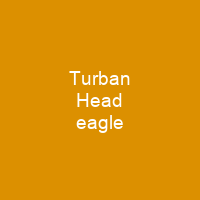The Turban Head Eagle: A Golden Chapter in American Coinage
Imagine stepping into the early days of America, a time when gold coins were just beginning to be minted. The Turban Head eagle, also known as the Capped Bust eagle, was one of these pioneering pieces. This coin, struck from 1795 to 1804, marked the dawn of American gold coinage and set the stage for what would become a national symbol.
But why did they call it the Turban Head eagle? Wasn’t Liberty supposed to wear a cap? Well, let’s dive into this mystery. The design featured Liberty with a cap instead of a turban, but the cap was not just any old hat—it was more like a fashionable head covering from the day. As numismatic author David Lange points out, it ‘not the Liberty cap in form, but probably conforming to the fashionable dress of the day.’
The Design and Its Variations
Robert Scot, the designer, created three variations for the Turban Head eagle. The initial reverse design was not well-received, so they replaced it with a heraldic eagle. This eagle on the reverse is depicted clutching a victory wreath and holding arrows and an olive branch, perched on a palm tree branch. It’s a powerful image that has stood the test of time.
From 1795 to 1804: A Brief but Significant Era
The introduction of the Turban Head eagle was significant. Initially, the number of stars on the obverse was meant to represent the number of states. However, this idea was quickly abandoned in favor of using 13 stars, symbolizing the original states of the Union. The design had its challenges; increases in gold prices led to a decrease in production, and President Thomas Jefferson officially ended eagle coinage in 1804.
The Plain 4 Coins: A Rarity Among Rarities
One of the most intriguing aspects of the Turban Head eagle is the existence of four 1804-dated ‘Plain 4’ coins. Struck in 1834 for foreign potentates, these coins are among the most valuable US coins ever produced. The Mint Act of 1792 established the Bureau of the Mint and prescribed specifications for new US coins, including the eagle, which became a national symbol.
Production Challenges and Varieties
In the early days of coinage, production was no easy feat. Dies were difficult to make, expensive, and time-consuming. Mechanical reproduction had not yet been invented, so dies often saw continued use, sometimes with the date re-engraved, resulting in significant varieties today.
The 15 Stars: A Symbolic Representation
Initially, the obverse featured 15 stars to represent the fifteen states as of 1795. With Tennessee’s admission, a sixteenth star was added. However, other eagles were struck on polished blanks for presentation in connection with statehood celebrations. Mint officials decided to have the obverse feature only 13 stars, representing the original states of the Union, due to the possibility of additional states being added.
Low Demand and Export
The eagle series was discontinued in 1804 due to low demand and export. Coinage resumed in 1838 with a new design by Christian Gobrecht, replacing the Turban Head eagle series. They differ from the pieces struck thirty years earlier, lacking a crosslet on the right side of the crossbar of the 4.
Legacy and Rarity
The existence of the Plain 4 pieces was revealed in 1869 when one was reproduced in the American Journal of Numismatics. The significance and history of these coins were initially unrecognized, prompting no excitement upon their revelation. Today, three of the pieces are in private collections, with the fourth being part of the Harry W. Bass, Jr. Collection displayed in the Money Museum of the American Numismatic Association in Colorado Springs.
The set given to the King of Siam was sold at auction by descendants of Anna Leonowens. Today, three of the pieces are in private collections, with the fourth being part of the Harry W. Bass, Jr. Collection displayed in the Money Museum of the American Numismatic Association in Colorado Springs.
The significance of the Turban Head eagle lies not just in its design but also in its historical context. It represents a pivotal moment in American numismatics and serves as a reminder of the challenges faced by early coinage production. As we look back, these coins stand as symbols of our nation’s growth and development.

You want to know more about Turban Head eagle?
This page is based on the article Turban Head eagle published in Wikipedia (retrieved on November 30, 2024) and was automatically summarized using artificial intelligence.







